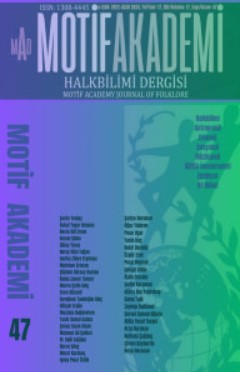SUSTAINABLE FASHION DESIGN WITH GAZENNE WOVEN FABRIC, THE CULTURAL HERITAGE OF KEMALIYE
SUSTAINABLE FASHION DESIGN WITH GAZENNE WOVEN FABRIC, THE CULTURAL HERITAGE OF KEMALIYE
Author(s): Neşe HORASAN, Çimen BAYBURTLUSubject(s): Cultural history, Customs / Folklore, Visual Arts, Sociology of Culture
Published by: Motif Halk Oyunları Eğitim ve Öğretim Vakfı
Keywords: Gazenne Woven Fabric; Fashion; Design; Creative Industry; Sustainability;
Summary/Abstract: This study explores garment design applications that enhance the sustainability of Gazenne fabric. The primary objective is to promote this fabric as a tangible cultural asset, integrating it with sustainable and slow fashion movements to embed it in daily life. The featured collection, “Boomerang,” embodies the theme of sustainability and caters to women who value longevity and versatility in their wardrobe. The collection showcases designs characterized by recyclable, sustainable, and interchangeable elements. It aims to create a nexus between historical and futuristic fashion by utilizing “Gazenne Weaving Fabric,” indigenous to the Kemaliye district of Erzincan. This fabric, which received its geographical indication in 2013, has revitalized traditional weaving techniques and provided new employment opportunities. A central goal of this research is to rejuvenate Gazenne weaving—an endangered intangible cultural heritage—and repurpose it for contemporary apparel. Accordingly, the collection comprises garments designed for durability and versatility, facilitating various combinations with other clothing pieces. The research methodology includes a collection design of ten outfits conceptualized under the “Sustainability” theme, supported by a literature review and an experimental design approach. Two selected garments from this collection exemplify the practical application of sustainable fashion principles, emphasizing the use of Gazenne woven fabric. Ultimately, this study underscores the potential positive impacts on sustainable fashion, cultural heritage preservation, and local economic development. These findings may inspire similar initiatives and encourage the adoption of more sustainable, responsible practices in the fashion industry.
Journal: Motif Akademi Halkbilimi Dergisi
- Issue Year: 17/2024
- Issue No: 47
- Page Range: 1790-1805
- Page Count: 16
- Language: English

